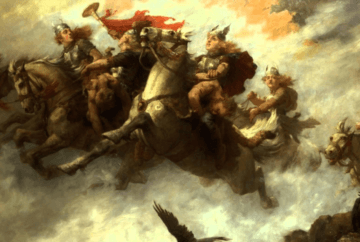Justin E. H. Smith in his Substack Newsletter:
 Every era gets the Gesamtkunstwerk it deserves. In Richard Wagner’s 1849 essay, The Artwork of the Future, the German composer conceives theater as the ideal site for the reintegration of dance, tone, and poetry, which had been separated out after their original unity in Greek drama. Architecture, too, was to be incorporated into the new unified mega-art, as the art of framing the total theater staged within its edifice. And there is drama too, which already on its own, Wagner thinks, is a sort of “conjoint” totality, “since it can only be at hand in all its possible fullness, when in it each separate branch of art is at hand in it in its own utmost fullness.”
Every era gets the Gesamtkunstwerk it deserves. In Richard Wagner’s 1849 essay, The Artwork of the Future, the German composer conceives theater as the ideal site for the reintegration of dance, tone, and poetry, which had been separated out after their original unity in Greek drama. Architecture, too, was to be incorporated into the new unified mega-art, as the art of framing the total theater staged within its edifice. And there is drama too, which already on its own, Wagner thinks, is a sort of “conjoint” totality, “since it can only be at hand in all its possible fullness, when in it each separate branch of art is at hand in it in its own utmost fullness.”
The four-part opera cycle Der Ring der Nibelungen (1869-1876) was his most complete attempt to realize such an all-embracing work, building layers of Germanic mythology —the Volk being the “force that conditions the artwork”— onto an earlier Romantic sensibility in the vein of Giacomo Meyerbeer that Wagner would infamously come to despise as all so much “Judenthum”. The völkisch element is not just in the libretto, the set design, and the costumes, but in the music itself, and of course there was a large budget at Bayreuth for fuming dragons and other such effects. Wagner was himself known to fume when his pyrotechnics malfunctioned.
More here.
